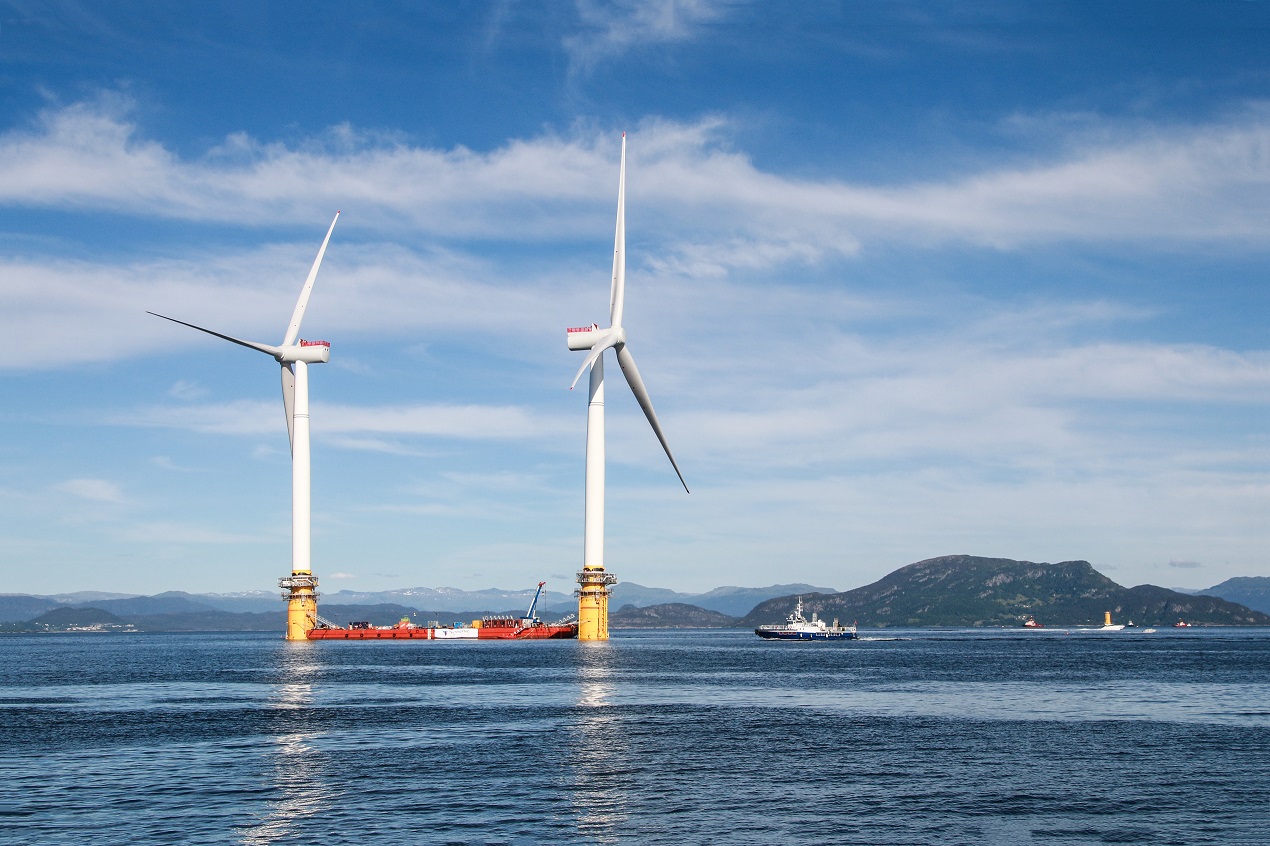The Energy Transition | Government pledges up to £21.7 billion for UK's first net-zero industrial clusters
Published on 7th October 2024
Welcome to our top picks of the latest energy regulatory and market developments in the UK's transition to net zero

This week we look at the government's funding of the UK's first net zero industrial clusters, Ofgem's proposal for a cap and floor on generators' transmission charges, DESNZ's annual consultation on new technologies in the Capacity Market, and more
Government pledges up to £21.7 billion for UK's first net-zero industrial clusters
The UK government has confirmed that it will provide up to £21.7 billion of funding over 25 years to support the UK's first two net-zero industrial clusters, as part of the UK's plans to capture and store 20-30 million tonnes of carbon dioxide (CO2) a year by 2030.
The funding will be used to build and operate carbon capture, usage and storage (CCUS) infrastructure for the East Coast Cluster in Teesside and the HyNet North West cluster in Merseyside, and connect the projects to blue hydrogen production facilities. Blue hydrogen refers to the production of hydrogen from natural gas where the CO2 emitted during the process is captured and stored. The two projects were identified through Track 1 of the government's CCUS cluster sequencing programme (as we previously reported).
The CCUS infrastructure for the East Coast Cluster will be built and operated by the Northern Endurance Partnership, a joint venture between BP, Equinor and TotalEnergies.
The government also announced that The Crown Estate has awarded an agreement for lease to energy technology company Eni to repurpose existing infrastructure to transport and store CO2 as part of the HyNet cluster.
The Department for Energy Security and Net Zero (DESNZ) has stated that it expects the two projects to create 4000 new jobs and remove over 8.5 million tonnes of carbon emissions each year once fully operational. The clusters were originally intended to be operational by the mid-2020s, however DESNZ now anticipates they will begin operations from 2028.
The announcement comes 10 days before the government's International Investment Summit and in the same week that the UK's last coal-fired power station was closed (as we previously reported). The UK energy secretary, Ed Miliband, said: "On Monday, 150 years of coal in this country came to an end. Today, a new era begins… By securing this funding, we pave the way for securing the clean energy revolution that will rebuild Britain’s industrial heartlands."
Ofgem proposes cap and floor on generators' transmission charges
In an open letter, Ofgem has acknowledged the growing uncertainty surrounding the volatility and unpredictability of long-term Transmission Network Use of System (TNUoS) charges. Ofgem expressed concern about the potential impact of the instability of the charges on investment decisions and consumer costs, especially considering the UK government's commitment to clean power by 2030.
This latest publication builds on Ofgem's previous calls for significant reform of TNUoS charges. In September 2023, the regulator published an open letter on strategic transmission charging reform, outlining the need for reform of the charges within the context of the Review of Electricity Market Arrangements (REMA). That letter highlighted that TNUoS charges should send efficient locational investment signals and remain cost reflective. Ofgem reported that the industry responses overwhelmingly supported the need to improve the predictability of TNUoS charges and ensure consistency with other market signals.
In its most recent open letter, Ofgem set out five key concerns with the current TNUoS charging methodology:
- Rising charges in northern Great Britain: 10-year projections from National Grid Electricity System Operator (NGESO), which has subsequently become the National Electricity System Operator (NESO) as covered below, indicate significant increases in TNUoS charges for generators, especially in northern Scotland where they could triple from today's figures by 2033. This is driven by the large-scale infrastructure investments required for decarbonisation.
- Short notice for generators: Under the current methodology, generators receive only three months’ notice of how capital expenditure investments will impact their charges, which creates uncertainty.
- Impact on investment decisions: Long-term uncertainty around TNUoS charges may increase costs for generators and create barriers to investment, risking the delivery of a clean power system by 2030.
- Volatility of TNUoS charges: Ofgem acknowledges that the existing charging methodology's volatility could be hindering investment decisions. The TNUoS Task Force was established in May 2022 to address these issues, but progress has been delayed due to a hiatus in CUSC (Connection and Use of System Code) Workgroup meetings.
- Higher credits in Southern Great Britain: The unprecedented infrastructure build required for clean power by 2030 could result in significantly higher credits for generators in the South of the country, potentially opposing consumer interests.
Ofgem has proposed a temporary cap and floor on wider TNUoS charges for generation as the most suitable intervention to reduce investment uncertainty and protect consumers. This intervention would establish upper and lower limits on the £/kW charges paid by generators. Ofgem indicated that it would still allow for regional and locational differentials in charges. It would also have to ensure compliance with EU regulations on generator annual average transmission charges and be implemented without requiring changes to NESO's forecasting approach or timetable. Ofgem has indicated that this change should be capable of implementation from April 2026.
To implement this change, Ofgem has called on NESO to propose a code modification to the CUSC Panel in October. In advance of this, the proposal would need to be discussed in the Transmission Charging Methodologies Forum for initial industry feedback. Ofgem has suggested the modification should progress immediately and not be affected by the current CUSC hiatus, and has stated its intention to decide on the proposal and any alternatives by summer 2025.
DESNZ opens yearly consultation on new technologies to be used in the Capacity Market
DESNZ has opened its yearly consultation to determine whether any new generation technologies are suitable for participation in future Capacity Market auctions.
The consultation is looking for technologies which can be integrated in the UK's energy system and contribute to security of supply, such as those involving energy storage and demand-side response, which will enhance both the resilience and sustainability of the energy system. These advancements are paramount in supporting the transition to a low-carbon energy system and achieving the UK's net-zero targets. Examples of new technologies that secured Capacity Market eligibility last year include vehicle-to-everything (V2X) technology, and offshore hybrid assets, which utilise interconnectors to connect offshore wind generation directly with multiple countries.
The consultation will remain open until 11pm on 1 November 2024. DESNZ will then consider with NESO whether to pursue any of the submitted technologies for use in the Capacity Market. The outcome will be published by 1 December 2024, as per the Capacity Market Rules.
Official launch of the UK's NESO
As trailed in a previous edition of the Energy Transition, NESO officially launched on 1 October. The move comes after the government's £630 million acquisition of the Energy System Operator (ESO) from the National Grid following the ratification of the Energy Act 2023 which established NESO and set out primary and secondary duties for the body to fulfil.
NESO aims to take a whole system approach in dealing with matters such as the planning of Britain’s electricity and gas systems, operating the electricity network and offering recommendations and reporting to Ministers within DESNZ. NESO intends to work closely with the government to achieve the new administration's goal of delivering clean power by 2030 and wider plans of achieving net zero emissions by 2050.
The establishment of the organisation marks a change to the structure of UK energy oversight as the body will be an independent systems operator. This is a detachment from the previous structure in that it consolidates within one entity the responsibility for the system and market planning roles within the gas transmission network previously performed by National Gas Transmission, and the electricity system roles previously held by the ESO.
Paul Golby, chair of NESO, has said that the organisation "will support a more integrated and coordinated strategy to meet the unprecedented challenges of climate change, ensuring security of energy supply and keeping bills as low as possible."
National Grid announces first demand turn-up, generation turn-down contracts
National Grid Electricity Distribution (NGED) has announced that for the first time, in an effort to help balance the grid this winter, it will offer demand turn-up and generation turn-down contracts. NGED is trialling the contracts in three locations: the South West of England, South Wales and the Midlands. A total of 2,811 MWh will be made available under these contracts, which are targeted at owners or operators of flexible assets that can be available to turn-up demand or turn-down generation within 24 hours.
NGED is also seeking demand turn-down and generation turn-up flexibility agreements at more than 800 locations, many of which will be suitable for domestic customers with heat pumps, battery storage, or electric vehicle chargers. There are opportunities for domestic participation in 744 low voltage zones, and 64 opportunities in high voltage locations; equating to peaks of 21.9MW and 241MW respectively. NGED's press release states that high voltage requirements have a market value of £7 million in availability payments and offers further payment when called upon to deliver, while prescheduled low voltage requirements have a market value of £1.15 million.
NGED’s distribution system 0perator flexibility commercial manager, Helen Sawdon, said the opportunities “will help match the volume of energy demand with the volume of energy being generated, incentivising energy consumers to use electricity at times when it’s in abundance – for example on a sunny day where there's lots of solar generation," and confirmed that if the trial is successful NGED "hope to roll it out wider in the future.”
The window to bid for a flexibility contract is open now and will run until 4 November 2024.
This article was written with the assistance of Rosie Shaw, Alexander Eaton, Harry Warren, Anita Ikpea and Joe Sandom.






